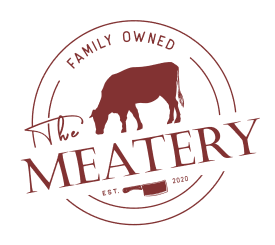Beef is a favorite among meat lovers, and when it comes to choosing the right cut of meat, the Beef Marbling Score (BMS) plays a significant role. The BMS is used to grade the quality of beef based on the amount of intramuscular fat it contains.
The more marbling a piece of beef has, the more tender, juicy, and flavorful it is. In this article, we will take an in-depth look at BMS, what it means, the difference between A5 and BMS, the quality grades of beef, and how to choose the right BMS for your dish.
What is Beef Marbling Score (BMS)?
Beef marbling refers to the white flecks of fat within the muscle tissue of beef. The marbling adds flavor and juiciness to the meat, making it a desirable trait among beef lovers. Beef Marbling Score (BMS) is a system used to grade the quality of beef based on the amount of intramuscular fat in the meat. The BMS ranges from 1 to 12, with 12 being the highest grade.
The BMS is determined by examining the cross-sectional area of the ribeye muscle between the 6th and 7th rib. A beef sample is given a score based on the amount and distribution of intramuscular fat in the sample. The higher the score, the more marbling the meat has, and the better the quality.
At The Meatery, our First Time Wagyu Eater collection is a fantastic starting point for those new to high-quality marbled beef. Each cut in this collection is carefully selected to provide a balanced introduction to the flavor and texture that high BMS ratings offer. For those seeking an even more luxurious experience, our Try Something Crazy collection features exceptional cuts with higher BMS scores, perfect for truly indulging in the exquisite marbling of premium Wagyu.
How is BMS Scored?
The BMS is a complex system that considers both the amount and distribution of intramuscular fat in the meat. The score ranges from 1 to 12, with 12 being the highest grade.
BMS 1-3: Little to no marbling. The meat is lean and lacks flavor.
BMS 4-5: Slight marbling. The meat has a decent flavor but is not as tender or juicy as higher-scoring beef.
BMS 6-7: Moderate marbling. The meat is tender, juicy, and has a good flavor.
BMS 8-9: High marbling. The meat is incredibly tender, juicy, and flavorful.
BMS 10-12: Very high marbling. The meat is extremely tender, juicy, and flavorful.
The Difference Between A5 and BMS
A5 is the highest grade of beef in Japan and is known for its incredible tenderness, juiciness, and flavor. A5 beef has a BMS of 8 to 12, with 12 being the highest grade. The high level of marbling in A5 beef makes it incredibly tender and flavorful, making it a popular choice for high-end restaurants and special occasions.
BMS, on the other hand, is the grading system used to determine the quality of beef based on the amount of intramuscular fat in the meat. While A5 beef has a BMS of 8 to 12, BMS can also be applied to other grades of beef. BMS is used to grade beef in countries such as the United States, Australia, and Canada.
The Quality Grades of Beef
In the United States, beef is graded by the United States Department of Agriculture (USDA). The USDA has four quality grades of beef, which are:
Prime: This is the highest quality grade of beef, with the highest amount of marbling. It is usually reserved for high-end restaurants and is very expensive.
Choice: This is the second-highest grade of beef, with less marbling than prime but still of high quality. It is more affordable than Prime and is suitable for most dishes.
Select: This is the third-highest grade of beef, with less marbling than choice. It is leaner than prime and choice and is suitable for dishes that require lean meat.
Standard: This is the lowest grade of beef, with the least amount of marbling. It is usually sold in supermarkets and is suitable for dishes that do not require high-quality meat.
In addition to these four grades, the USDA also has a fifth grade, which is:
Commercial: This grade of beef is usually sold to fast-food chains and is of lower quality than standard beef. It has the least amount of marbling and is not suitable for most dishes.
Australia and Canada have their own grading systems, but they are similar to the USDA's grading system.
What is the Best Marbling Score for Beef?
The best marbling score for beef depends on personal preference, cooking method, and the dish you are preparing. Generally, a score of 4 to 7 is considered good and suitable for most dishes. For example, a score of 4 is perfect for stews, while a score of 7 is great for grilling or roasting. However, if you want the highest quality meat with the most marbling, A5 beef with a BMS of 8 to 12 is the way to go.
How to Choose the Right BMS for Your Dish
On the other hand, higher marbling scores are better suited for dishes that require tender, juicy, and flavorful meat, such as steaks and roasts. For an exceptional dining experience, consider our Family Style / Shareable collection, which includes cuts with higher BMS scores that are perfect for grilled steaks or oven-roasted beef. Additionally, if you're preparing a special dish where the meat’s quality shines, such as a luxurious roast or a show-stopping centerpiece, explore our Perfect With Sides collection, which features premium cuts that highlight the rich marbling and superb flavor of high BMS Wagyu. By selecting the right BMS, you ensure that your dish not only meets but exceeds your culinary expectations
Consider the cooking method as well when choosing the right BMS for your dish. If you are grilling or roasting the meat, a higher BMS is preferable as it will retain its tenderness and juiciness. For slow-cooked dishes, a lower BMS is better as the long cooking time will help tenderize the meat.
Tips for Cooking Different Cuts of Beef
Different cuts of beef require different cooking methods to bring out their best flavor and texture. Here are some tips for cooking different cuts of beef:
- Ribeye: This cut is best cooked on a grill or in a cast-iron skillet. It has a high amount of fat, which makes it tender and juicy when cooked correctly.
- Sirloin: This cut is best cooked on a grill or in a skillet. It is leaner than ribeye but still has a good amount of flavor.
- Filet mignon: This cut is the most tender but also the leanest. It is best cooked on a grill or in a skillet, but be careful not to overcook it.
- Brisket: This cut is tough but flavorful. It is best cooked low and slow in a smoker or oven to tenderize the meat and bring out its flavor.
- Chuck roast: This cut is great for stews and pot roasts. It has a lot of connective tissue, which requires a long cooking time to break it down and make the meat tender.
- Short ribs: This cut is perfect for braising or slow cooking. It has a lot of fat and connective tissue, which makes it incredibly tender and flavorful when cooked correctly.
BMS in Different Cuisines
Beef marbling scores are not just limited to one cuisine or country. Different countries have their own grading systems, and each has its own preference when it comes to the amount of marbling in beef.
In Japan, A5 beef is the most sought-after grade of beef, and it is used in various dishes, such as sukiyaki, shabu-shabu, and teppanyaki.
In the United States, prime beef is the most desirable grade and is used in high-end steakhouses and restaurants.
In Europe, the marbling score is not as significant, and the emphasis is more on the breed of the cow and its diet.
Common Mistakes When Choosing Beef
When it comes to choosing beef, there are a few common mistakes that people make. Here are some of them:
- Choosing the wrong cut of meat for the recipe: Different cuts of beef require different cooking methods, and choosing the wrong cut can result in tough, flavorless meat.
- Not considering the marbling score: The marbling score plays a significant role in the flavor and texture of the meat, and it can result in a subpar dish if not taken into consideration.
- Not letting the meat rest: Letting the meat rest after cooking allows the juices to redistribute, resulting in a more tender and flavorful dish.
- Overcooking the meat: Overcooking the meat can result in tough, dry meat that is unpleasant to eat.
Choosing the right beef marbling score (BMS) is crucial to creating a delicious and flavorful dish. The BMS is used to grade the quality of beef based on the amount of intramuscular fat it contains, and different marbling scores are suitable for different dishes and cooking methods. By understanding what BMS is, the difference between A5 and BMS, the quality grades of beef, and how to choose the right BMS for your dish, you can make an informed decision when selecting beef for your next meal. Remember to consider personal preference, cooking method, and the dish you are preparing when choosing the right BMS for your recipe.









